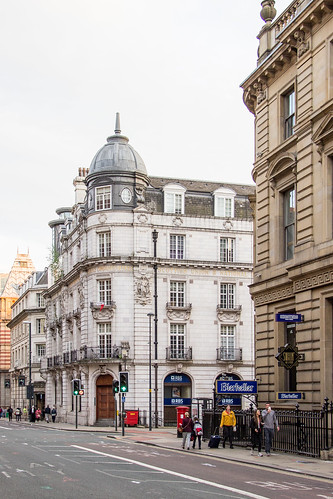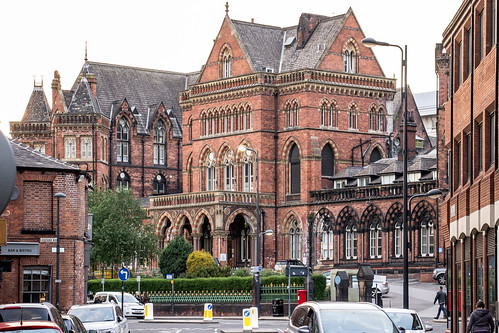Royal Bank of Scotland, Leeds, England
Royal Bank of Scotland, Leeds, England

Image by Billy Wilson Photography
Grade II listed historic building constructed in 1909.
"Leeds (/liːdz/) is the largest city in the county of West Yorkshire in Northern England, approximately 170 miles (270 km) north of central London. Leeds has one of the most diverse economies of all the UK’s main employment centres and has seen the fastest rate of private-sector jobs growth of any UK city. It also has the highest ratio of private to public sector jobs of all the UK’s Core Cities, with 77% of its workforce working in the private sector. Leeds has the third-largest jobs total by local authority area, with 480,000 in employment and self-employment at the beginning of 2015. Leeds is ranked as a High Sufficiency level city by the Globalization and World Cities Research Network. Leeds is the cultural, financial and commercial heart of the West Yorkshire Urban Area. Leeds is served by five universities, it has the UK’s fourth largest student population and the country’s fourth largest urban economy.
Leeds was a small manorial borough in the 13th century, and in the 17th and 18th centuries it became a major centre for the production and trading of wool, and in the Industrial Revolution a major mill town; wool was still the dominant industry, but flax, engineering, iron foundries, printing, and other industries were also important. From being a market town in the valley of the River Aire in the 16th century, Leeds expanded and absorbed the surrounding villages to become a populous urban centre by the mid-20th century. It now lies within the West Yorkshire Urban Area, the United Kingdom’s fourth-most populous urban area, with a population of 2.6 million.
Today, Leeds has become the largest legal and financial centre outside London with the financial and insurance services industry worth £13 billion to the city’s economy. The finance and business service sector account for 38% of total output with more than 30 national and international banks located in the city, including an office of the Bank of England. Leeds is also the UK’s third-largest manufacturing centre with around 1,800 firms and 39,000 employees; Leeds manufacturing firms account for 8.8% of total employment in the city and is worth over £7 billion to the local economy. The largest sub-sectors are engineering, printing and publishing, food and drink, chemicals and medical technology. Other key sectors include retail, leisure and the visitor economy, construction, and the creative and digital industries. The city saw several firsts, including the oldest-surviving film in existence, Roundhay Garden Scene (1888), and the 1767 invention of soda water.
Public transport, rail and road communications networks in the region are focused on Leeds; the second phase of High Speed 2 will connect it to London via East Midlands Hub and Sheffield Meadowhall. Leeds currently has the third busiest railway station and the tenth busiest airport outside London." – info from Wikipedia.
Summer 2019 I did a solo cycling tour across Europe through 12 countries over the course of 3 months. I began my adventure in Edinburgh, Scotland and finished in Florence, Italy cycling 8,816 km. During my trip I took 47,000 photos.
Now on Instagram.
Become a patron to my photography on Patreon.







